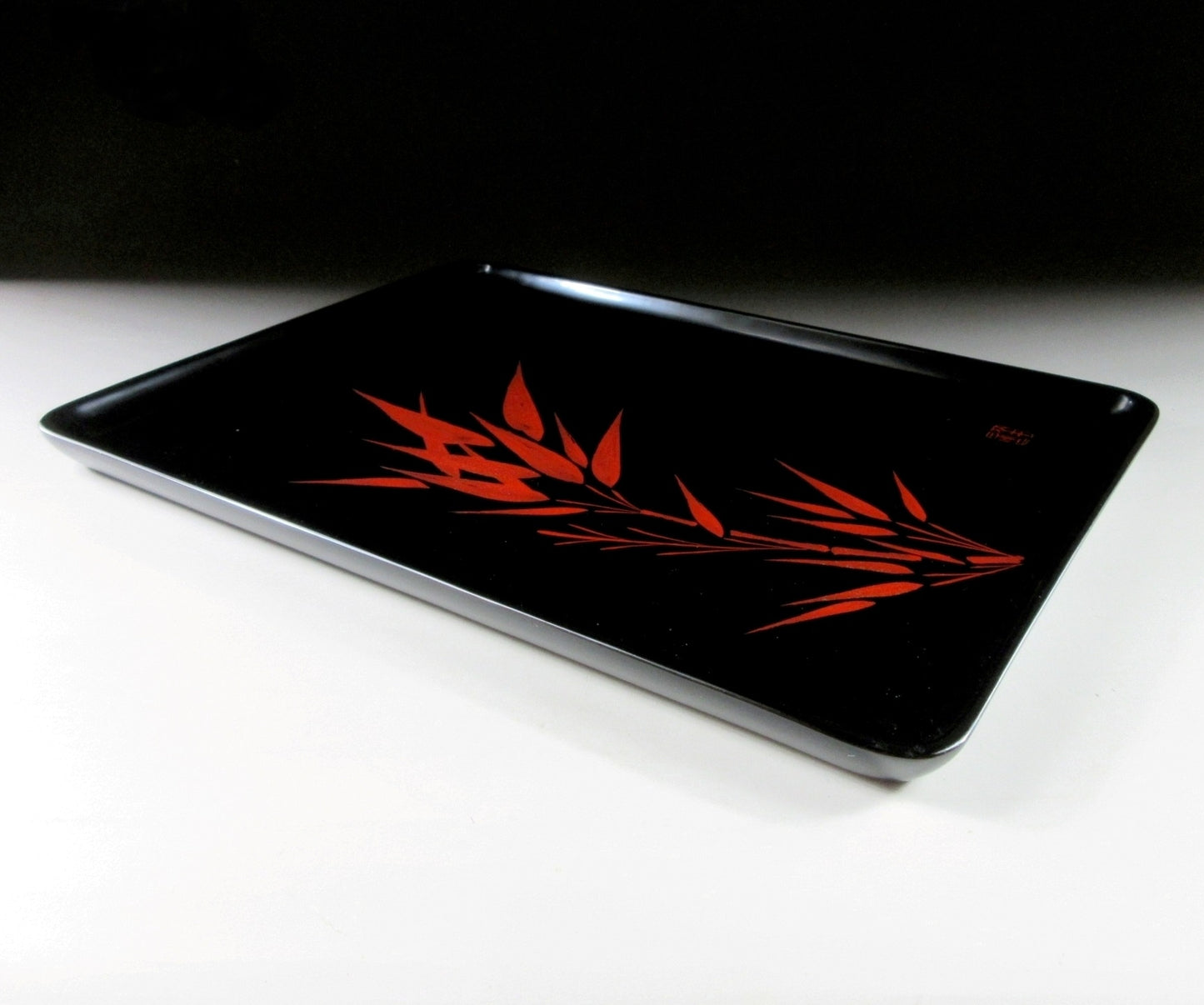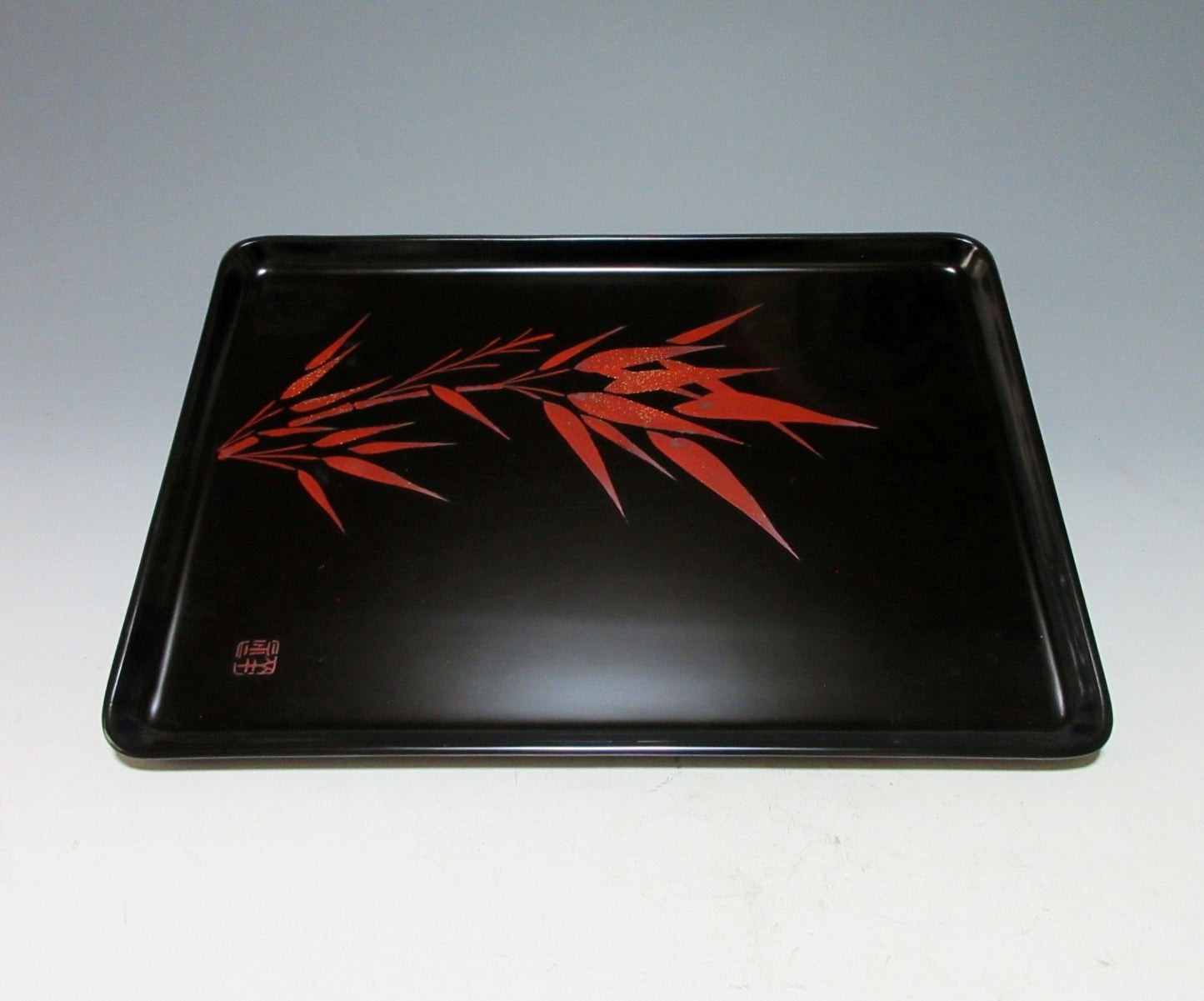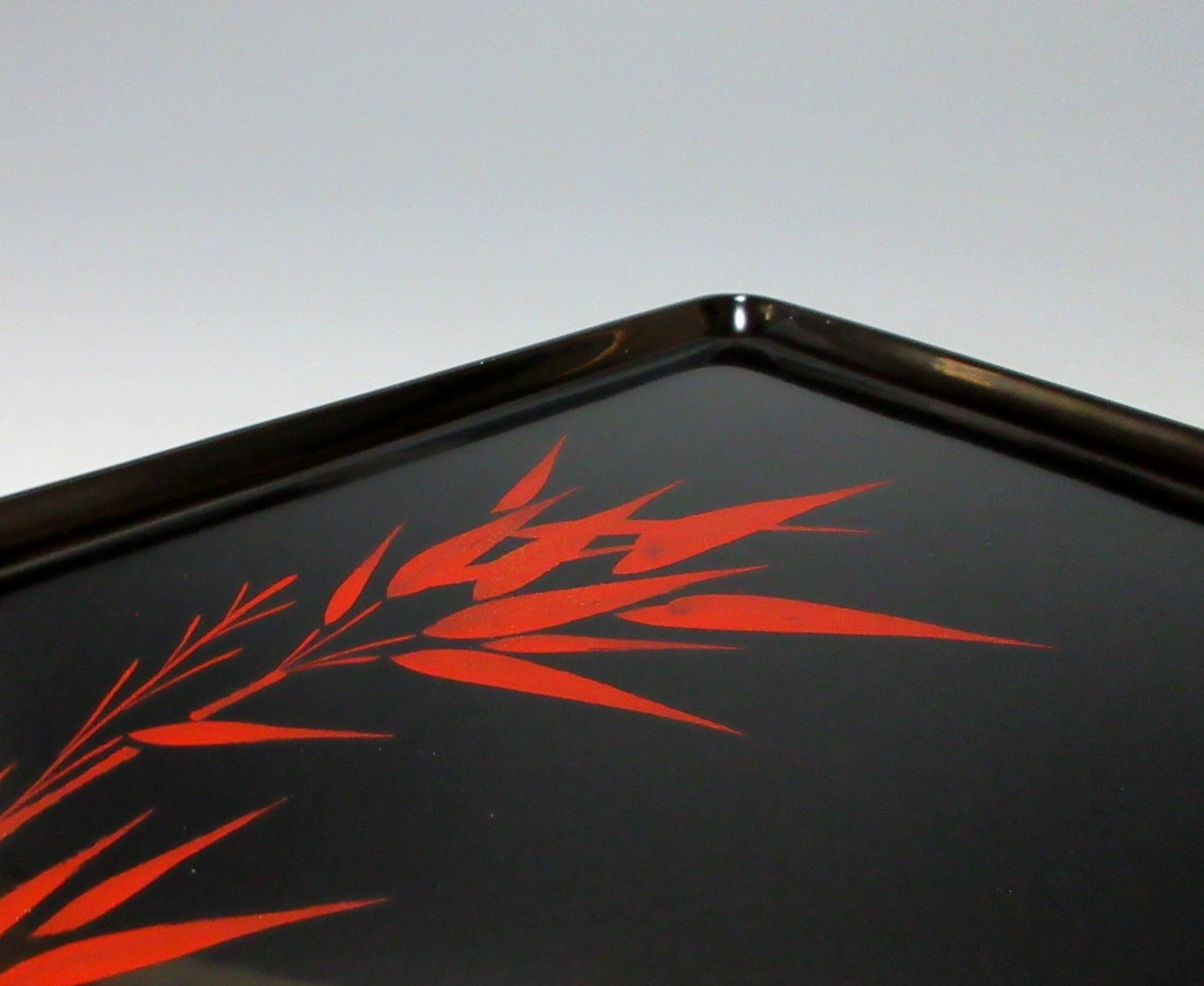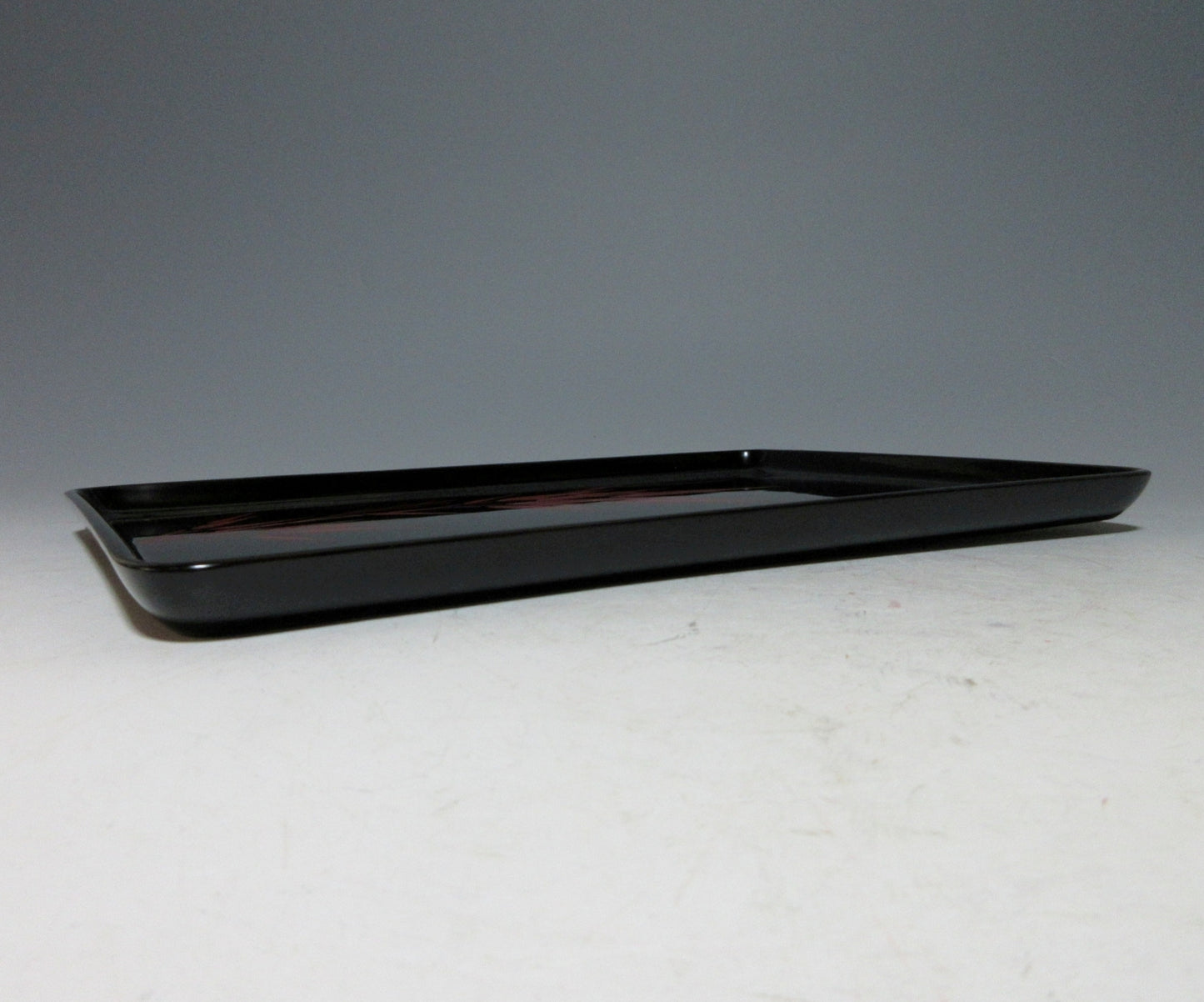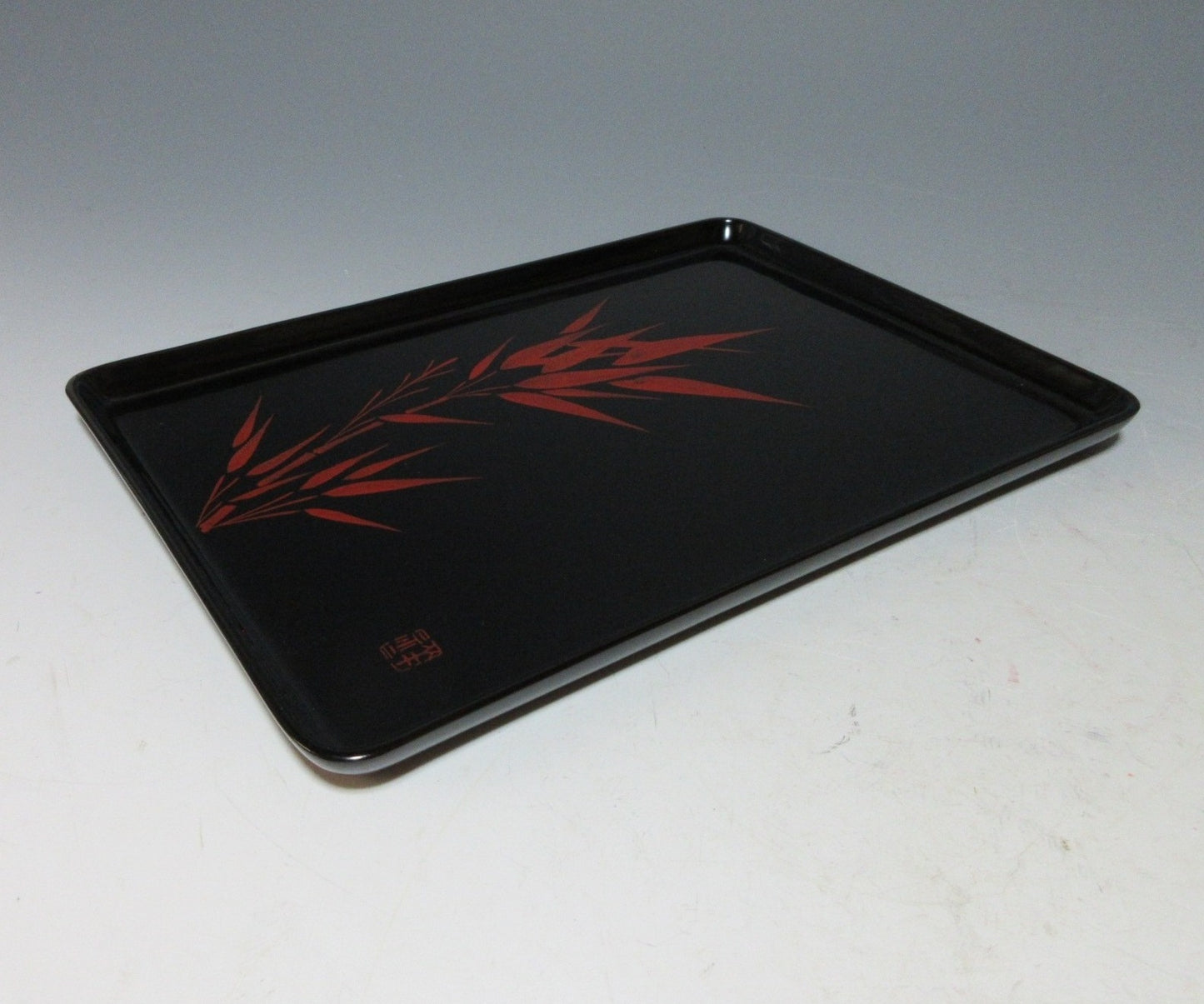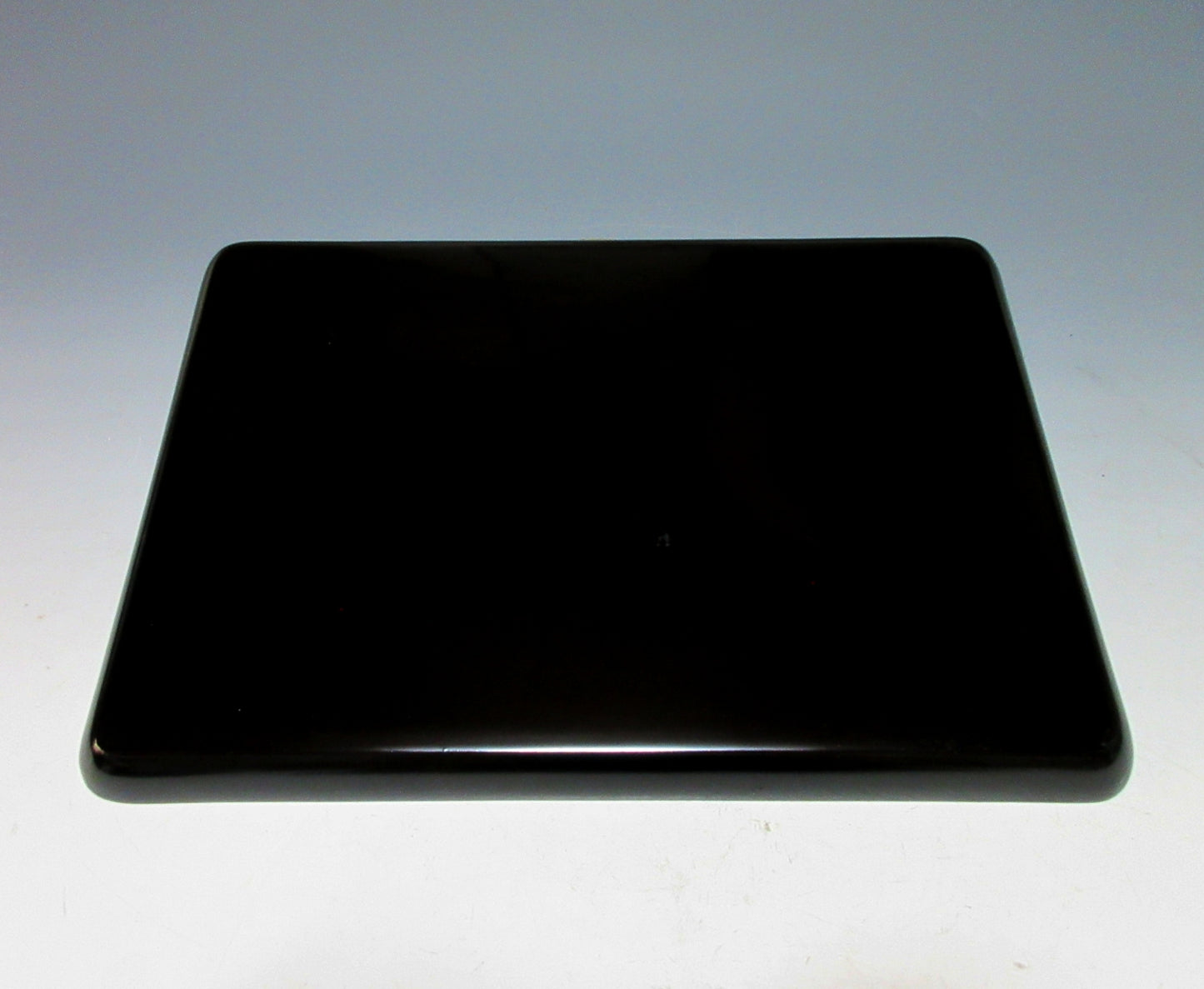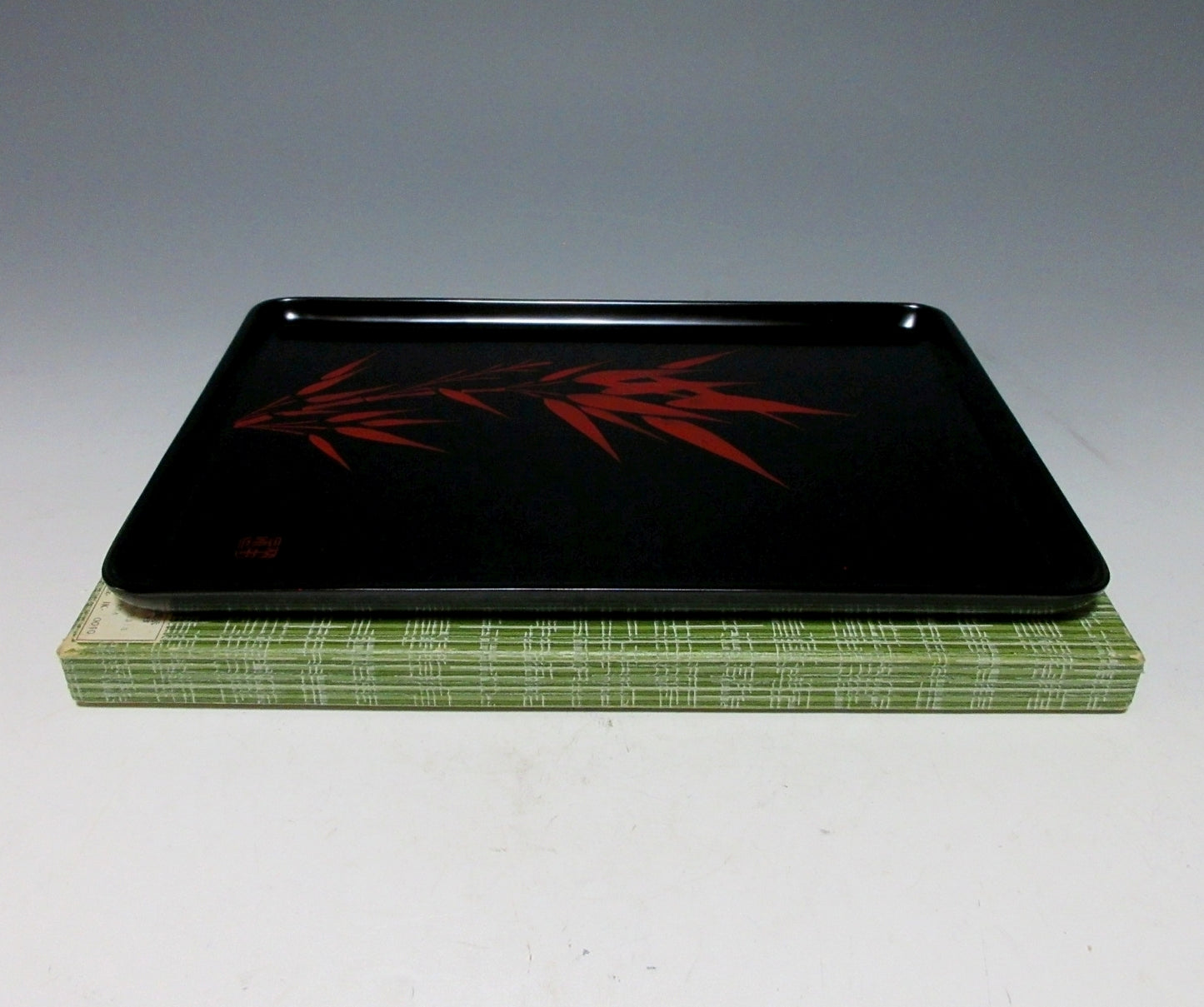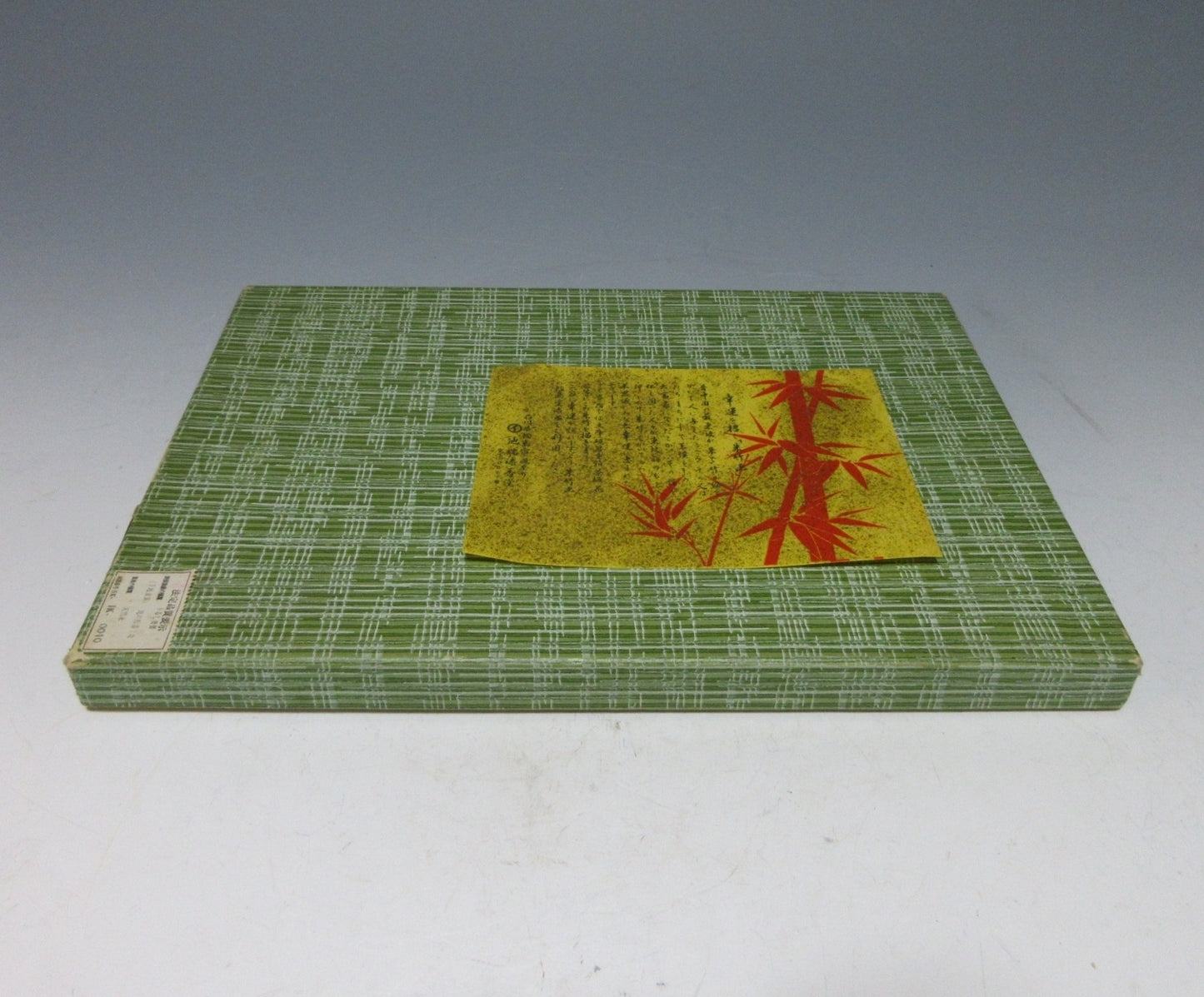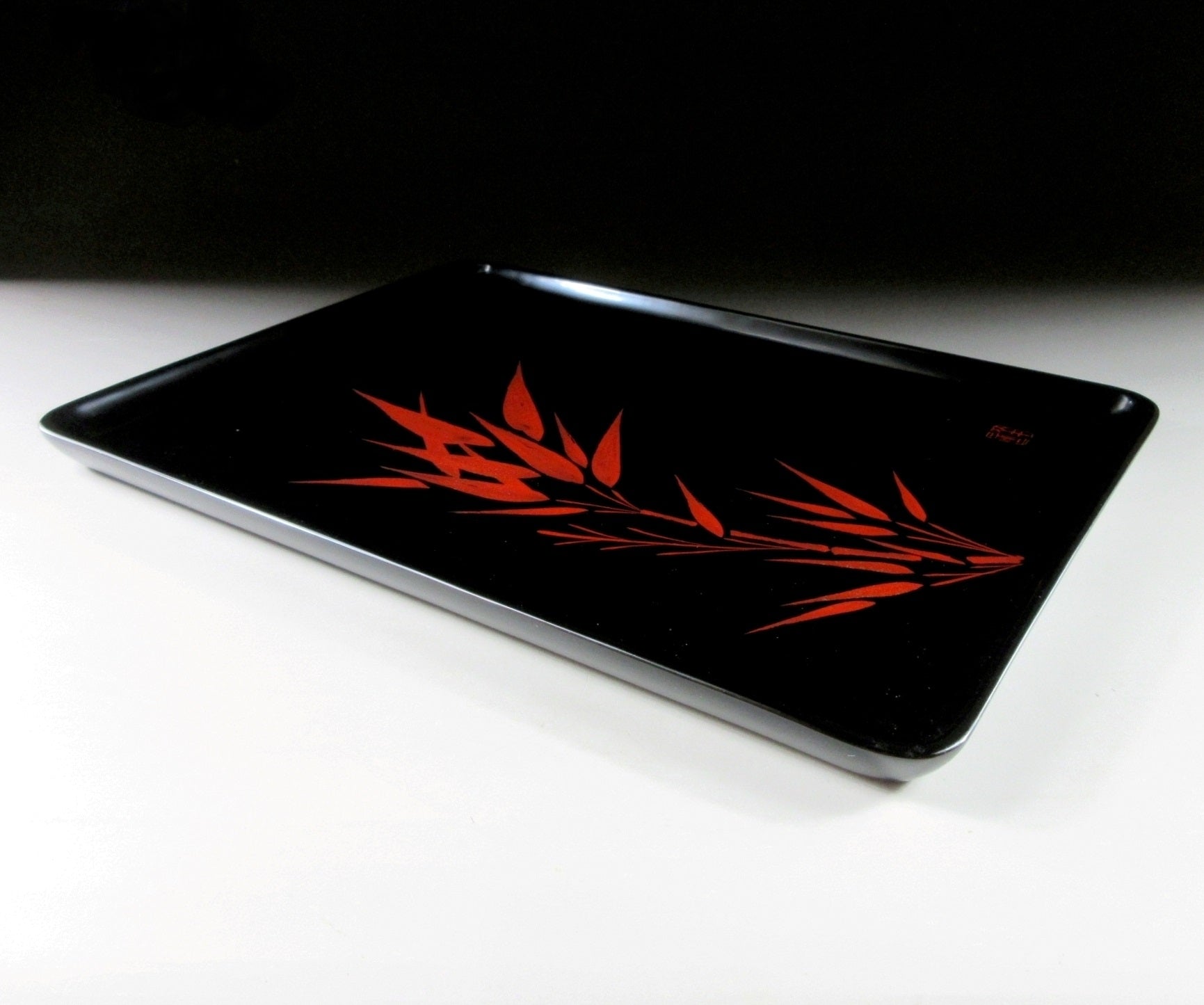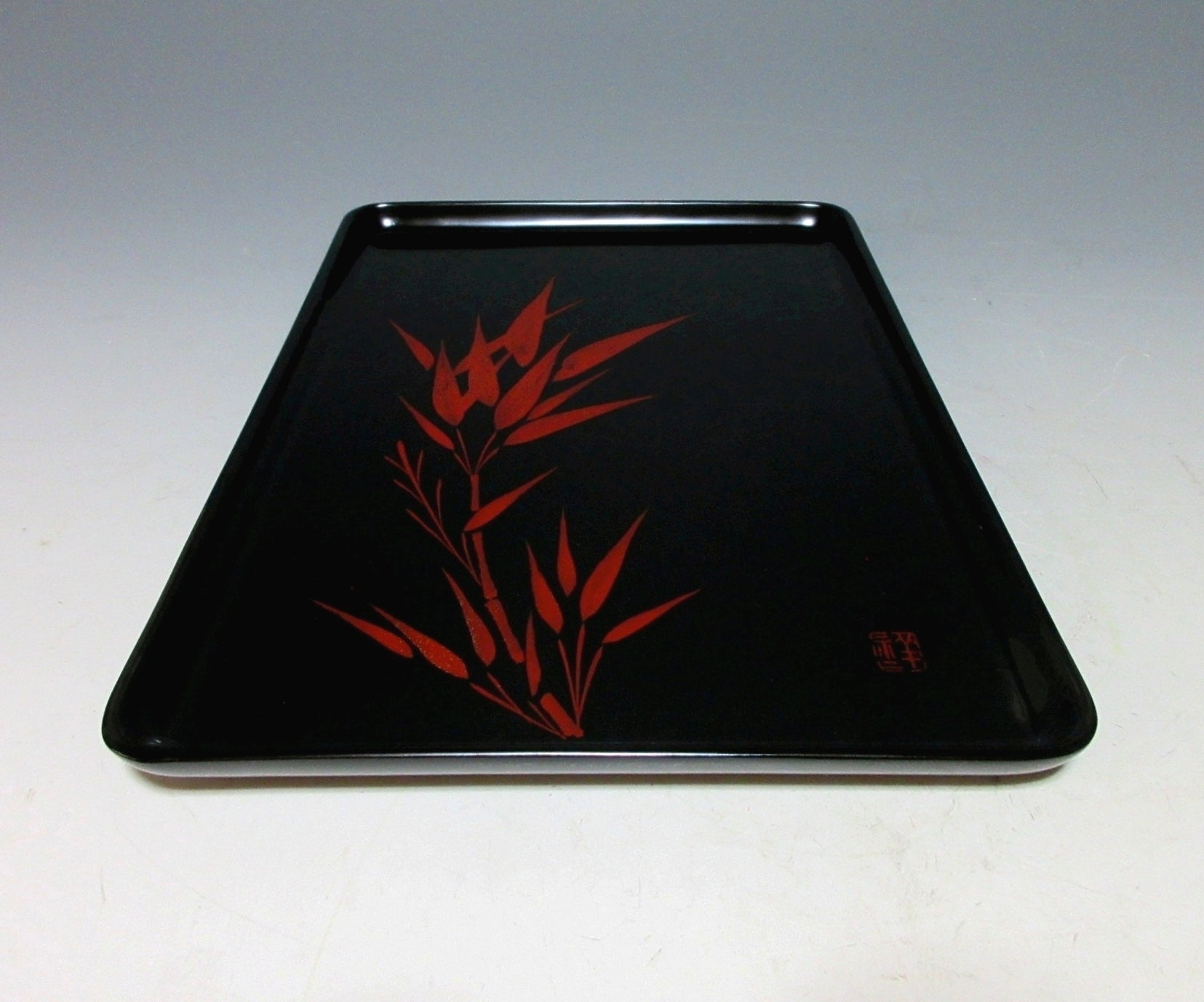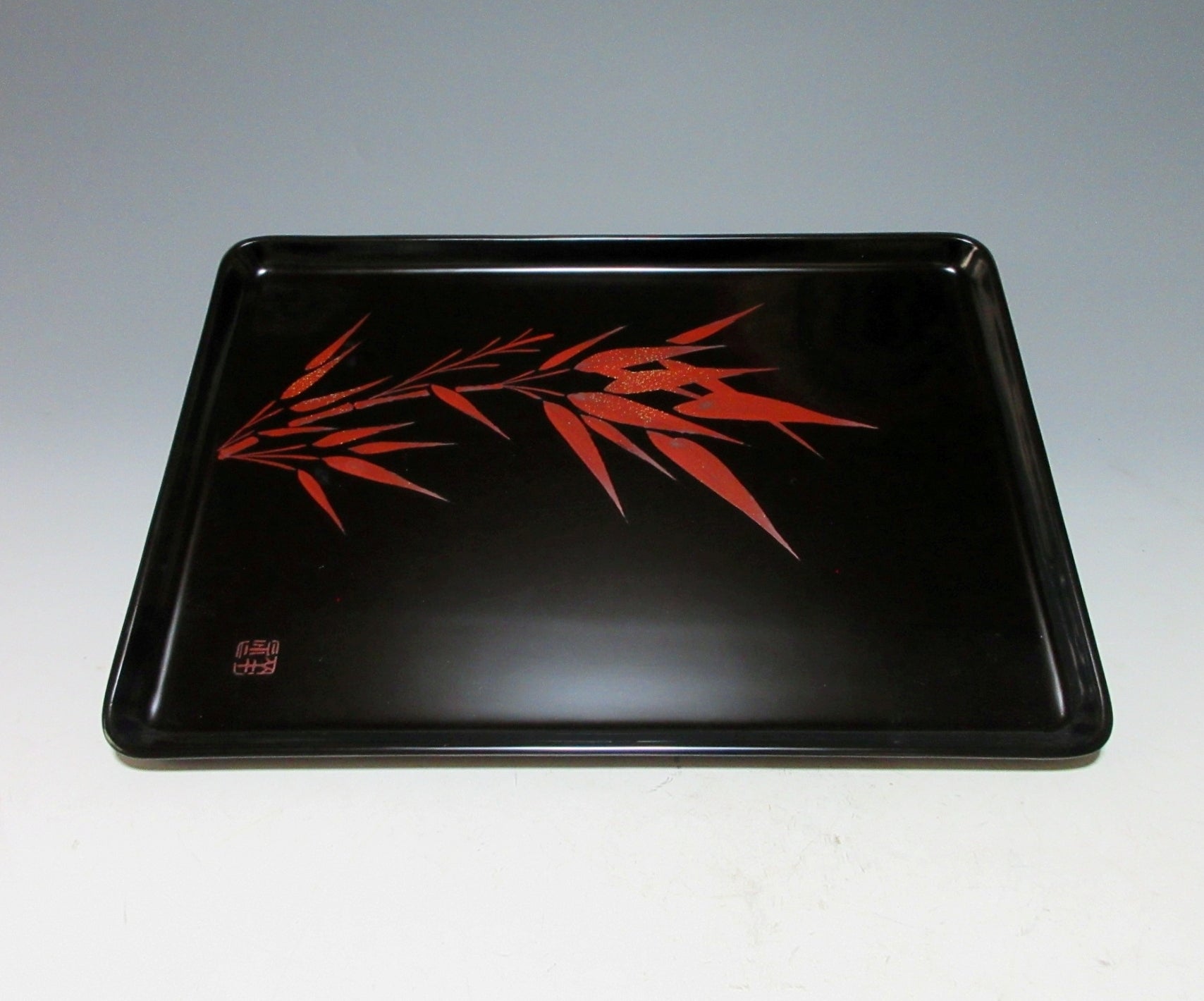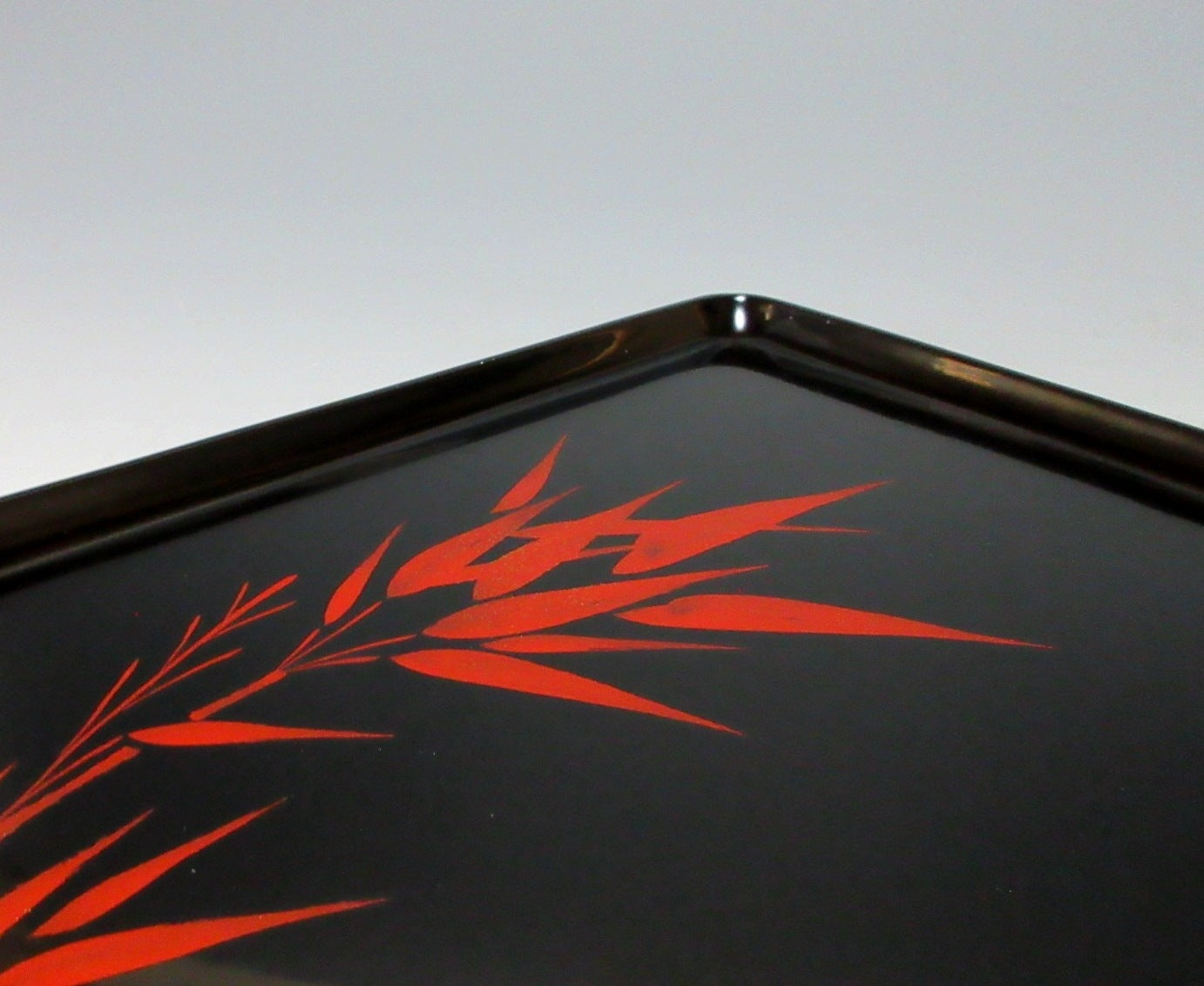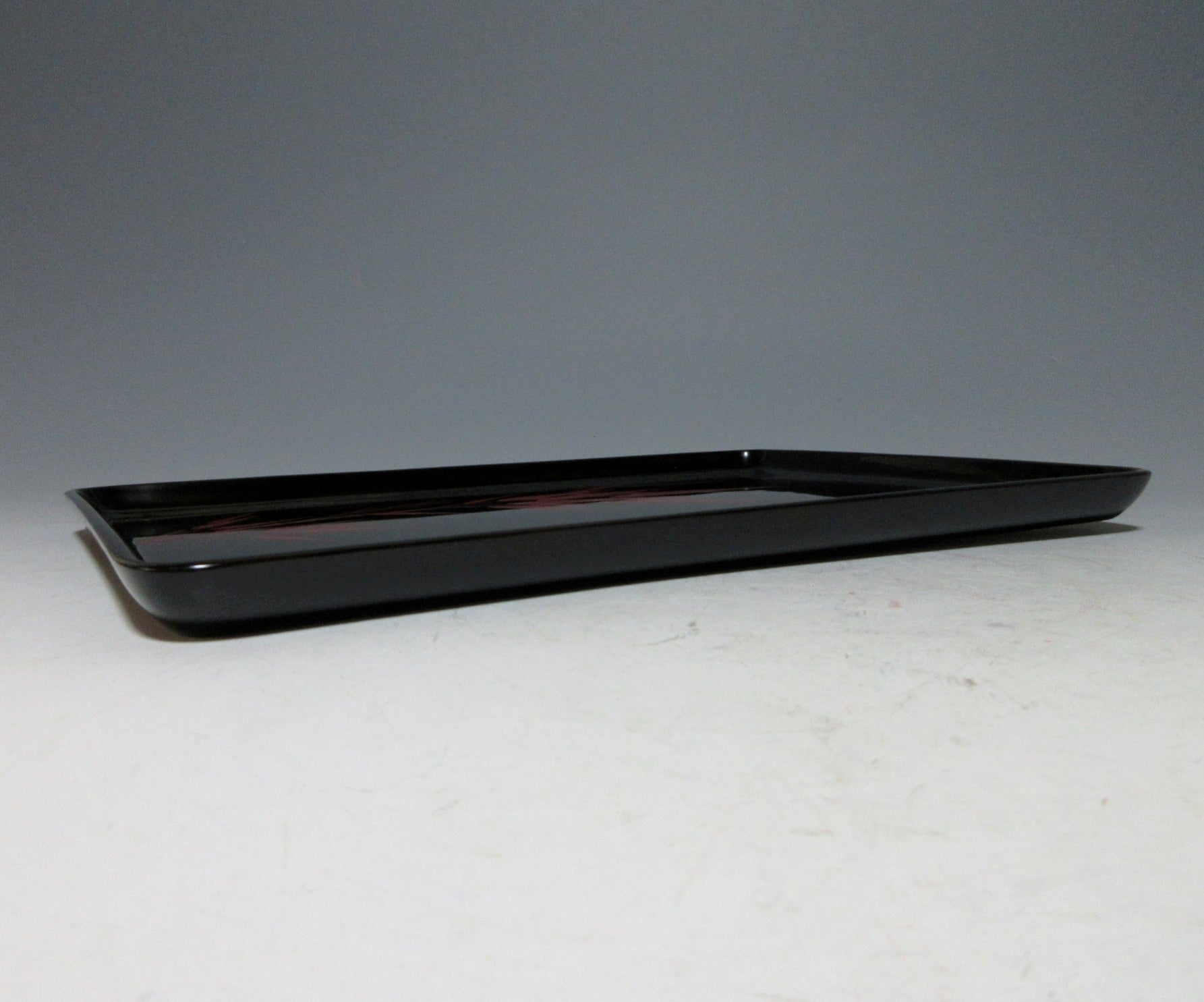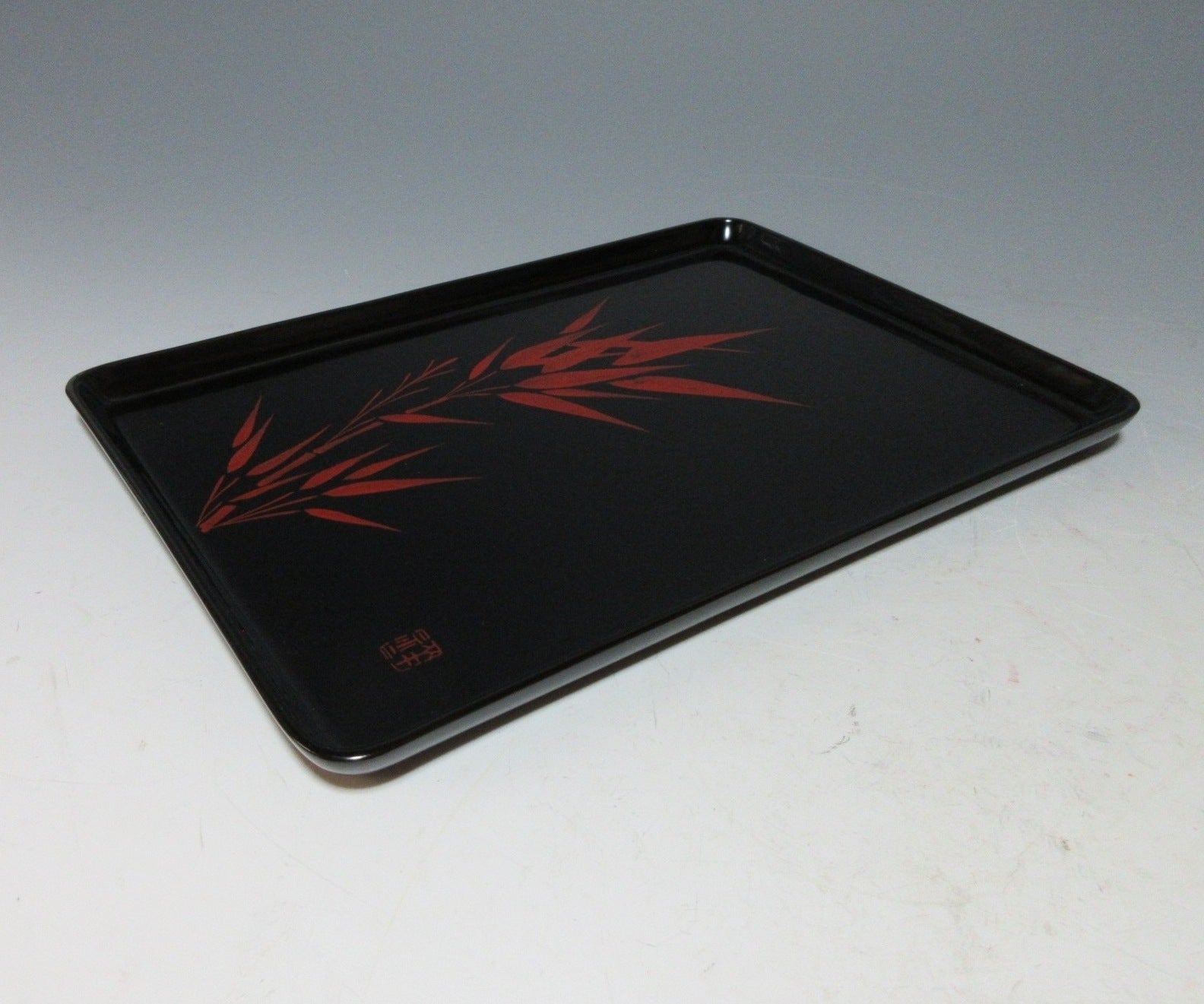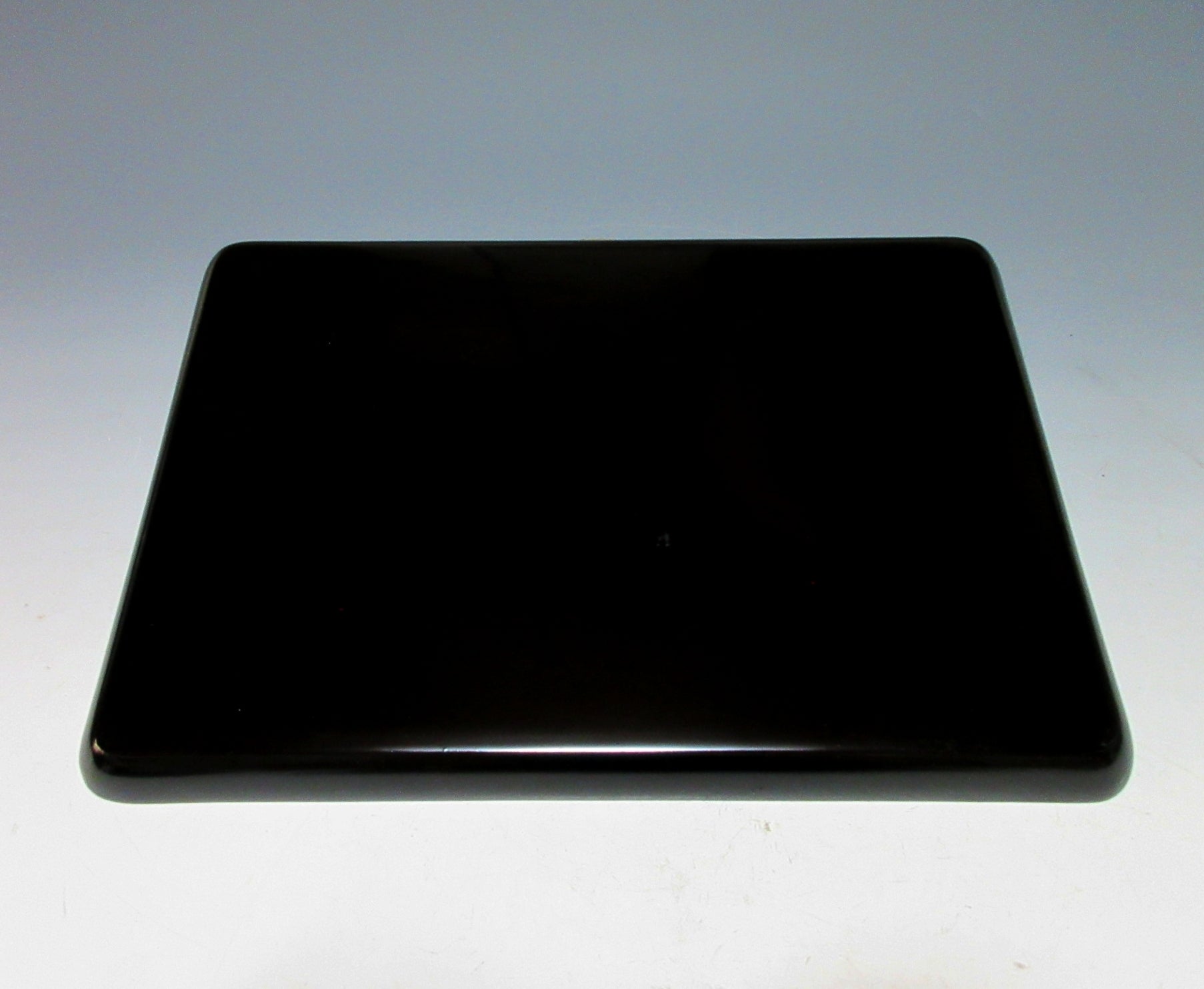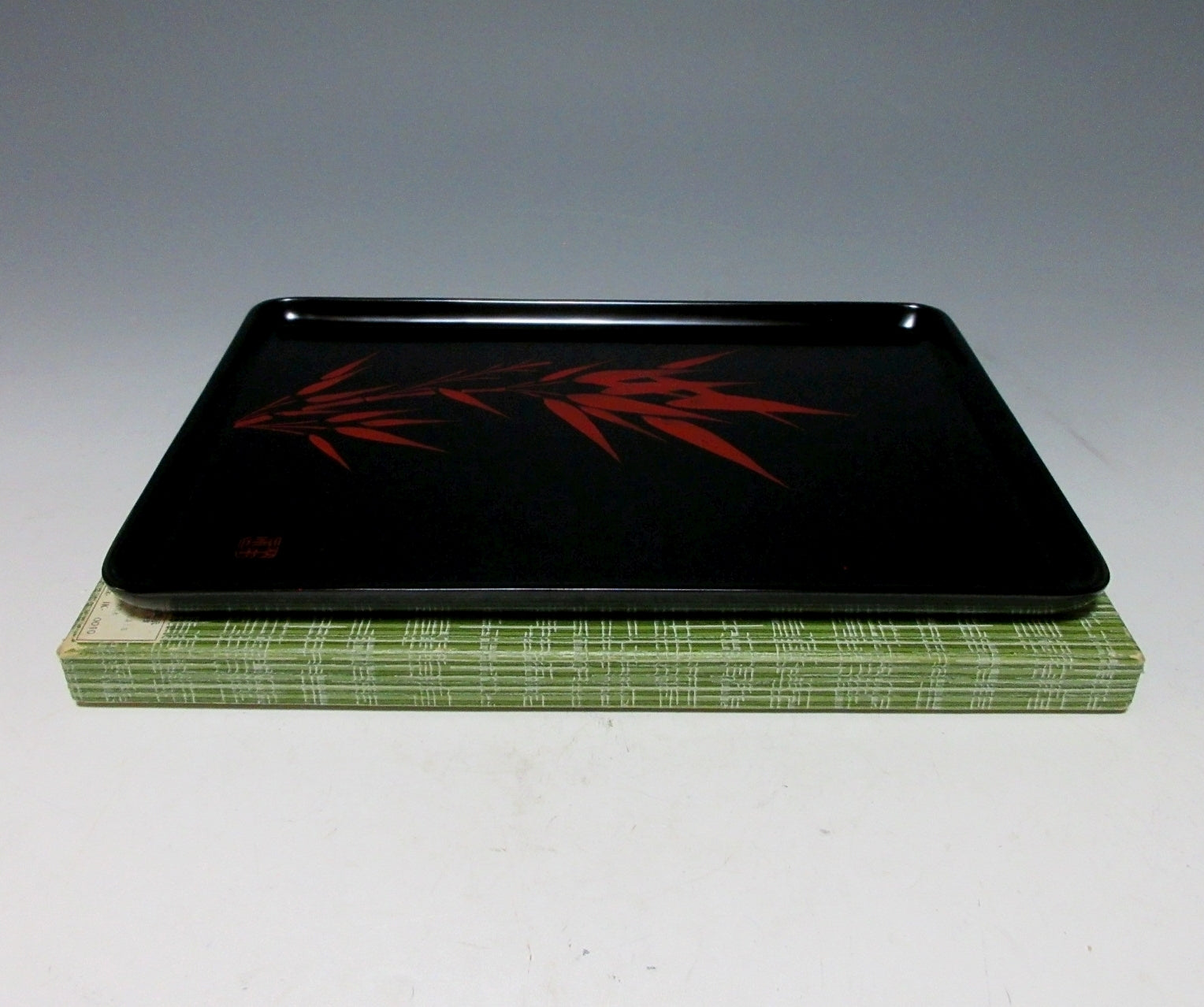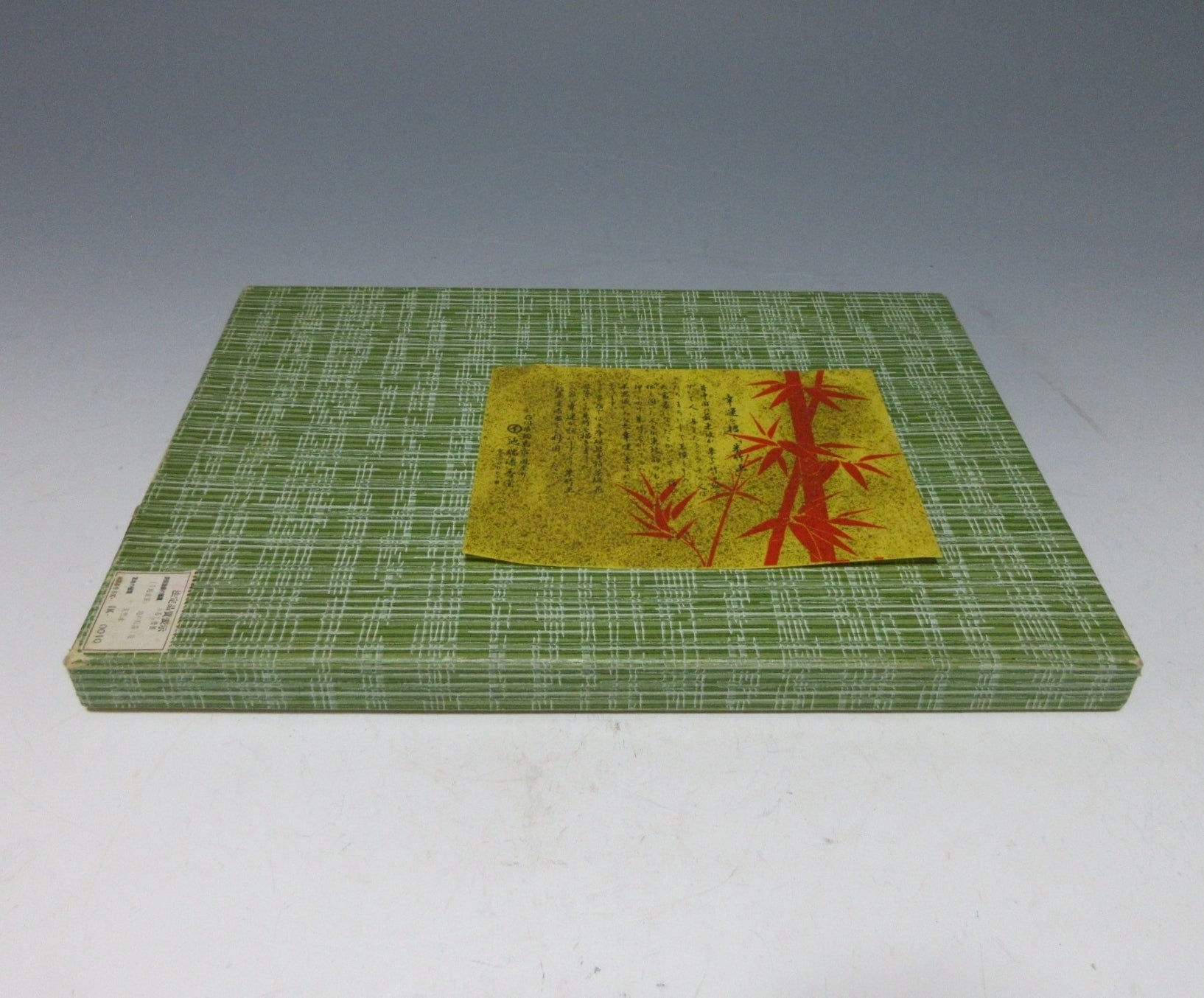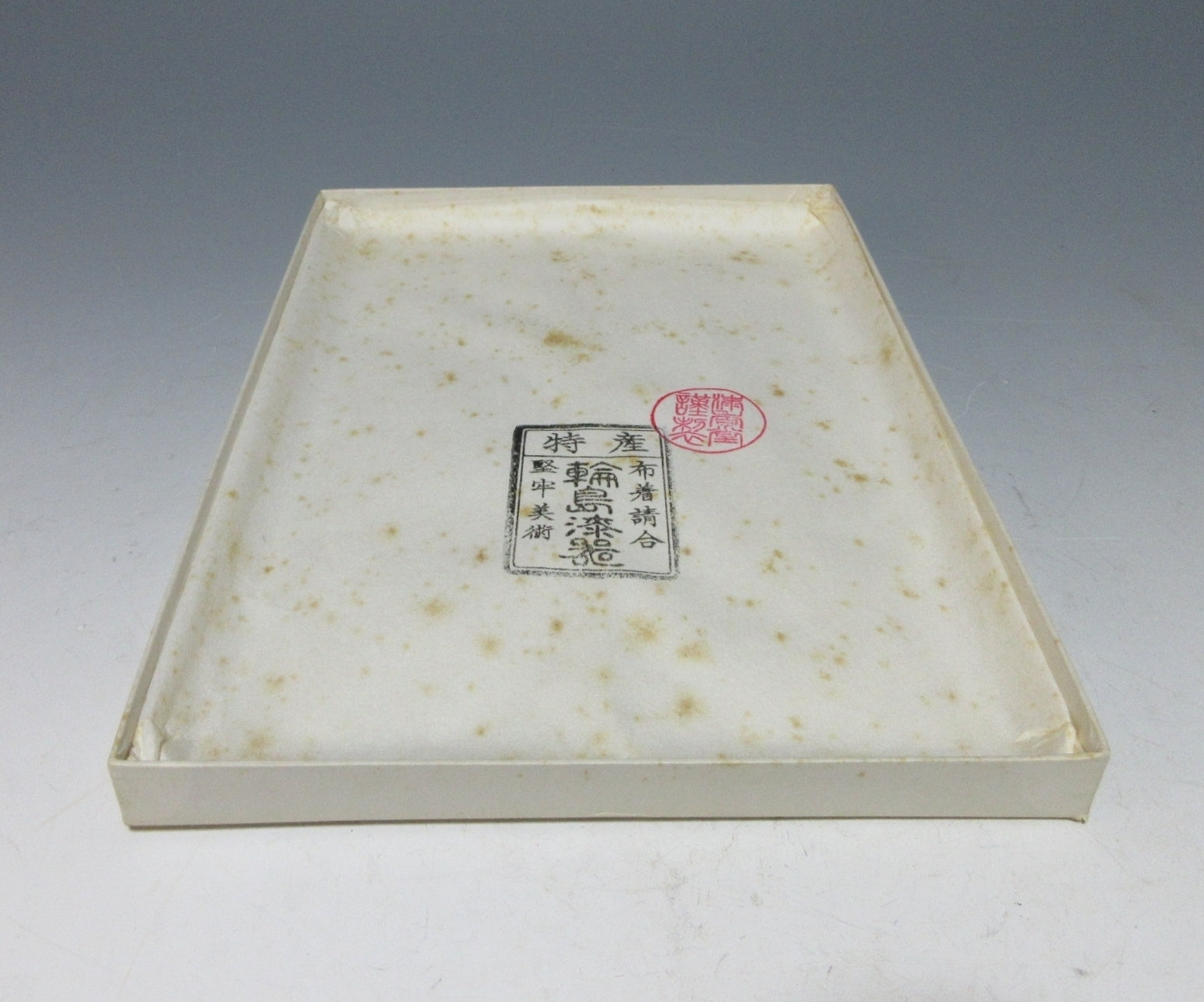Kominka Zakka
Wajima Ryusaku Lacquerware Tray
Wajima Ryusaku Lacquerware Tray
Couldn't load pickup availability
*SHIPPING OPTIONS VARY DEPENDING ON THE DESTINATION, PLEASE SCROLL TO THE END OF THIS LISTING FOR MORE DETAILS.
This listing is for a vintage Wajima-nuri lacquerware tray made around 30-40 years ago by Wajima Ryusaku. It is made of wood and decorated with makie depictions of red bamboo over a black lacquer base. Bamboo is a popular motif because it symbolises good luck in Chinese culture, and it’s a symbol of courage and bravery in Japan. The Ryusaku signature can be found on the front of the tray, and it comes with its original paper storage box. It also comes with a profile paper about the red bamboo design. *The Wajima lacquer district in Noto was severely damaged during the deadly earthquake on January 1st, 2024. A large fire tore through the area and destroyed workshops that had been in operation for hundreds of years. The vintage pieces you find online are all but is left from a large number of workshops.
Wajima Ryusaku is a Wajima-nuri lacquerware store and workshop founded in 1940 by Ikebata Ryusaku. They produce a variety of items, from everyday products like bowls and chopsticks, to more elaborate furnishings such as folding screens. It is currently being managed by the second and third generations, and they have stores in Wajima as well as Karuizawa in Nagano Prefecture. Both generations are certified lacquer artists, and they also employ three other lacquer craftsmen. Wajima Ryusaku also engages in restoration work and they offer custom made products. **Fellow sellers, this information was researched by Kominka Zakka and CANNOT be used in your own listings.
Wajima nuri refers to lacquerware produced in Ishikawa Prefecture. The process of applying the lacquer is very complex, and there are as many as 124 steps involved. A finely powdered mineral called jinoko is used for the undercoating making it highly resistant and strong. Each piece has up to 8 layers of lacquer, this is the main reason why Wajima lacquerware is widely known throughout Japan for its high quality and durability. Wajima lacquerware commands high prices so purchases are usually reserved for special occasions such as weddings and anniversaries.
Makie refers to a crafting technique in Japan from presumably the Nara period. Craftsmen sprinkle gold or silver metal powder over successive layers of lacquer before it dries. Traditionally pure gold powder, pure gold flakes, and pure silver powder were used to complete motifs on lacquerware. The process of applying gold or silver powder requires both time and skill. At first the craftsman sketches out the design. He or she then adds charcoal powder to the base of the relief, and then a layer of urushi lacquer. Gold or silver powder is sprinkled over the wet lacquer, which acts as an adhesive. The surface is polished and then the process is repeated over and over until a beautiful raised pattern appears.
Sizes
Paper Box: H.2.3cm (0.9”) x 31.6cm (12.4”) x 22.5cm (8.8”)
Tray: H.1.4cm (0.5”) x L.30.3cm (11.9”) x W.21.2cm (8.3”)
Condition
It’s in very good condition aside from a few minor marks. The paper box and the paper bag that protects the tray in the box are rather spotty.
THESE ARE SHIPPING ESTIMATES BASED ON THE CURRENT GLOBAL SITUATION
**Germany, France, Greece, Spain, Poland, Austria, Slovakia, Lithuania, Slovenia: NO SHIPPING. Very strict and expensive packaging laws in place and we are not licensed to send products to these countries. We have no plan to register at this time because the process is in some cases very expensive and complicated, plus each country has its own set of regulations and application process.
**USA, UK, Canada, Australia, New Zealand, Switzerland, Norway: Airmail Small Packet (approx. 15-28 days). Combined shipping available up to 2kgs for Airmail Small Packet (please send us a message).
**Asia: Airmail Small Packet (approx. 15-21 days). Combined shipping available up to 2kgs for Airmail Small Packet (please send us a message).
**Central Asia, Middle East, South Africa, Brazil, Mexico: EMS Express 10-15 days.
**Russia: No shipping methods available.
Share
